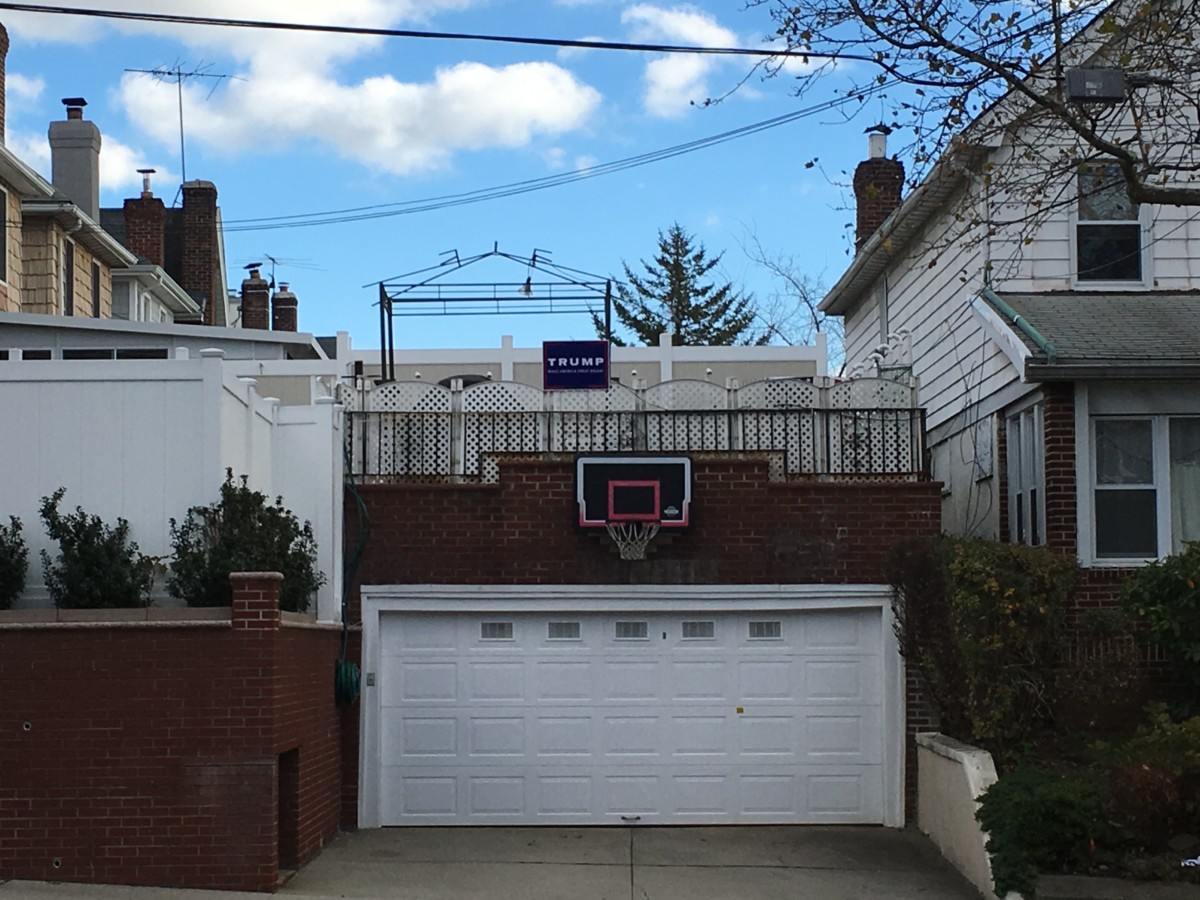 It is no secret that the vast majority of Brooklyn residents, 79% to be exact, voted for Hillary Clinton on November 8. It’s a large borough, though, and out past the rapidly gentrifying brownstone neighborhoods and downtown glass high-rises that have become Brooklyn’s national representation, things can look different. While they may be in the minority in the city, some neighborhoods at the southern and eastern edges of Brooklyn have quite a bit in common with Trump’s electorate.
It is no secret that the vast majority of Brooklyn residents, 79% to be exact, voted for Hillary Clinton on November 8. It’s a large borough, though, and out past the rapidly gentrifying brownstone neighborhoods and downtown glass high-rises that have become Brooklyn’s national representation, things can look different. While they may be in the minority in the city, some neighborhoods at the southern and eastern edges of Brooklyn have quite a bit in common with Trump’s electorate.
Dyker Heights, for example. Nestled between Bay Ridge and Bensonhurst, the neighborhood is home to roughly 48,000 residents. While there has been an influx of Chinese immigrants in recent years, it remains largely a leftover slice of outer-borough character. “There’s still some old-school guys around,” says John Fazio, at a pizzeria on 13th Avenue.
Bakeries and butcher shops with Italian names, a Knights of Columbus meeting hall, a coffee shop where one can still hear people speaking with the now all too rare genuine Brooklyn accent. Dyker Heights is mostly residential, and difficult to access by public transportation. Along the wide streets there are split levels and more than a few larger homes that gain some local notoriety every year due to their elaborate Christmas light displays. “It’s like a different atmosphere,” says Mr. Fazio.
There are roughly 11,000 people living in the central part of the neighborhood, in the voting districts where Trump received his highest levels of support. In Districts 70 and 79, running along the edge of the Dyker Beach Golf Course, Trump garnered almost 70% of the vote. In six other election districts in this section of the neighborhood, the President-elect took home more than 50%. Outside of Brooklyn’s Orthodox neighborhoods, these percentages are among the highest in the borough. Unlike Brooklyn’s Orthodox voters, however, Dyker Heights Republicans have been with Trump since the beginning. Earlier this year in the state’s Republican primary, Trump won easily here with more than 80% of the vote.
The residents here tend to skew a bit older—the median age is between 45 and 55—and are solidly middle class, as the average income is around $60,000. Census data shows that the most common forms of employment are management, construction, and sales. These areas of Dyker Heights are also demographically homogenous. In a neighborhood that is almost 55% white, the percentage is closer to 85% and 95% in several of the census tracts closest to the golf course.
It should come as no surprise, then, that these demographics line up with recent exit polling data of Trump voters from outside of Brooklyn. In terms of age, income, and education, residents of the neighborhood are essentially the same as the average Trump voter nationwide.
Further to the southeast, in Sheepshead Bay and Gerritsen Beach, the story is similar. Demographics of those neighborhoods represent a minority in Brooklyn, yet closely mirror the nationwide Trump vote. Like Dyker Heights, they are among Brooklyn’s more isolated neighborhoods, small enclaves with limited public transportation or connection to the city.
These neighborhoods only make up a small part of Brooklyn, but they also represent a connection to just how and why the election results turned out the way they did. Brooklyn may be an overwhelmingly blue borough, but for anyone looking to question why people may have voted for Donald Trump, some of the answers may be closer than you might think.


Leave a Reply